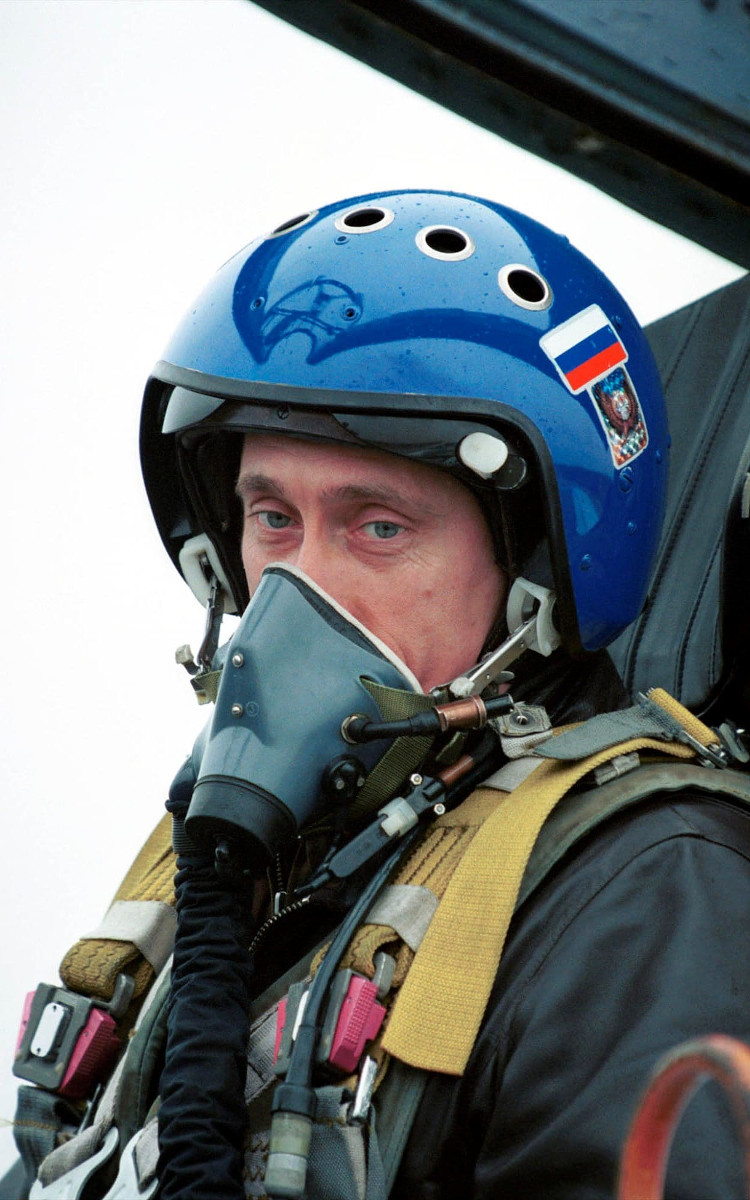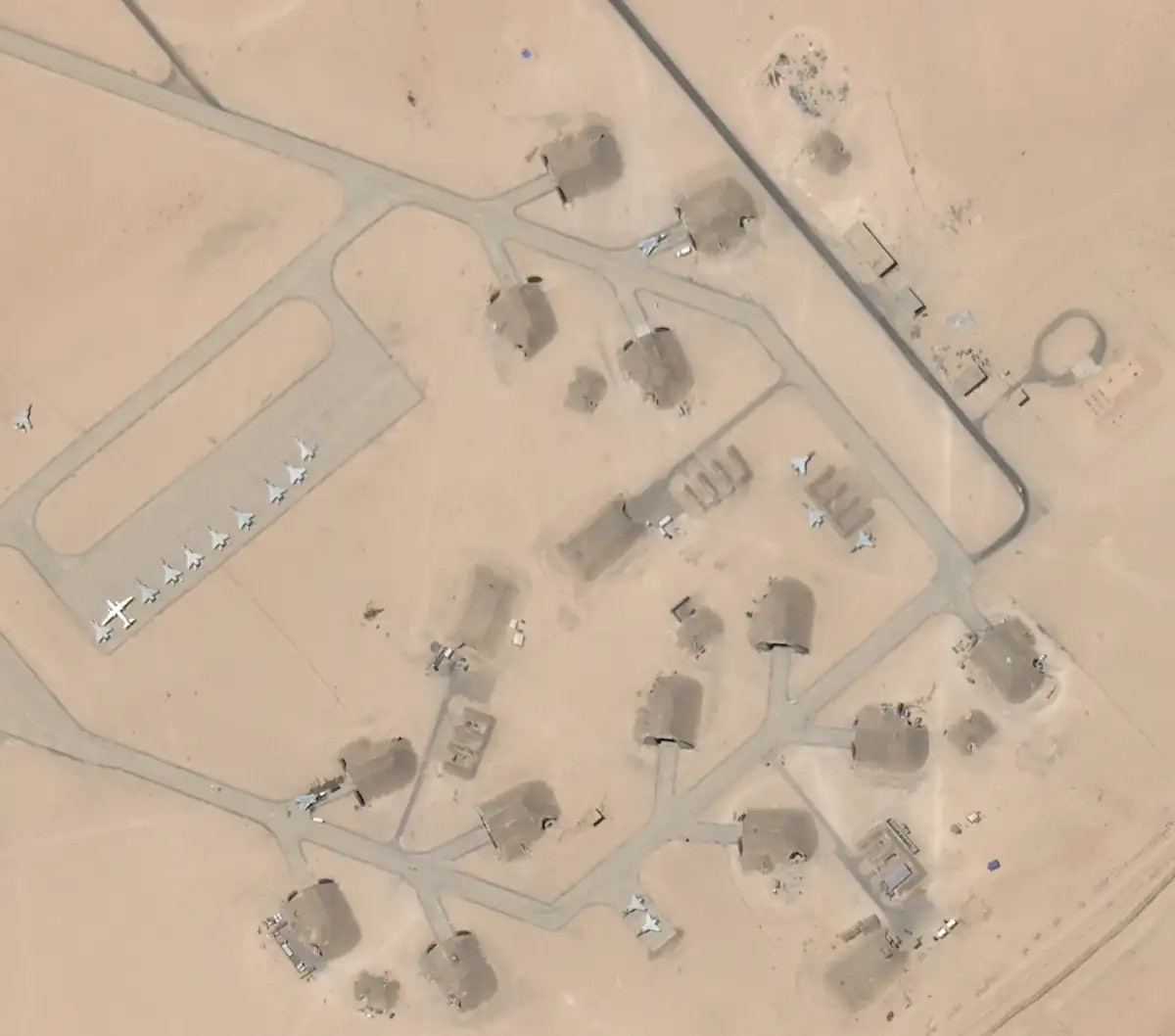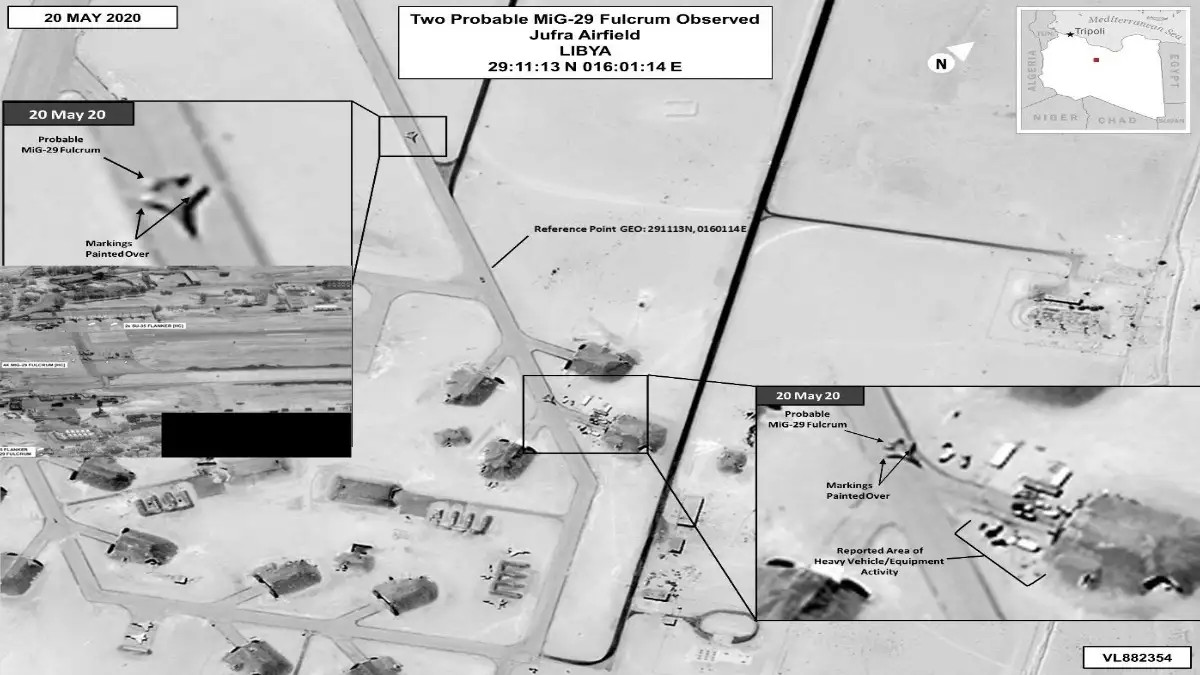A video that recently appeared on social media purportedly shows a Russian-speaking pilot after their aircraft went down in Libya who is about to be picked up by an Mi-24 Hind gunship helicopter. The clip shows a white-and-orange parachute on the ground, along with other equipment, including a helmet often worn by pilots of Soviet-era and more modern Russian combat jets, suggesting that they bailed out of just such an aircraft. This comes months after the U.S. military first said that Russian pilots were flying MiG-29 Fulcrum fighters and Su-24 Fencer combat jets in support of rogue Libyan general Khalifa Haftar and his Libyan National Army.
In the two-minute video, which is undated, but appears to have first emerged online on Sept. 7, 2020, the pilot filming speaks Russian as he pans across the deployed parachute, flying helmet, a radio beacon with antenna, and other items arranged on the ground in a rock-strewn desert landscape. He mentions that he ejected from his aircraft. There is then a break in the video before filming resumes to reveal an approaching Hind helicopter, which may be arriving to retrieve him.
There is no visible wreckage to give any clues as to the type of aircraft the pilot was flying, however, and they do not say whether they were shot down or experienced some kind of in-flight emergency that forced them to eject. There is also the possibility that this footage could be from some sort of combat search and rescue exercise.

The face of the pilot, who is seen in a seated position on the ground at the end of the video, is obscured. There are no obvious landmarks in the desolate landscape to readily identify where the video was shot. The Hind does not appear to have any clear markings, but does have the same camouflage scheme as examples that the Libyan National Army (LNA) operates.

The video below shows a captured LNA Hind helicopter in Libya with a similar camouflage scheme.

The Mi-24 is an attack helicopter, but also features a unique passenger compartment in the central fuselage. This makes it particularly well suited to combat search and rescue missions, among others.
As already noted, the helmet, which has five visible ports on top, is commonly used by pilots flying various Soviet-era combat jets, as well as newer Russian-made designs. This, combined with the pilot, in this case, saying they ejected from their aircraft, strongly points to them having been flying a combat jet of some kind prior to bailing out.



However, it is known Haftar’s LNA received at least 14 Russian-made combat jets, a mix of MiG-29s and Su-24s, earlier this year. The Su-24 is a two-seat aircraft, while the MiG-29 is a single-seat fighter. As such, that there is only one pilot in this footage reportedly from Libya could point to the loss of a Fulcrum.


The U.S. military has also said that Russian mercenaries affiliated with a private military company called Wagner, and even possibly actual members of the Russian military, have been flying these aircraft on behalf of the LNA. Wagner has at the very least extremely strong ties to Russia’s Main Directorate military intelligence agency, which is more commonly referred to by the Russian acronym GRU.
“USAFRICOM [U.S. Africa Command] estimated that Russian support to the LNA this quarter included approximately 3,000 Wagner Group mercenaries and approximately 2,000 Syrian mercenaries sponsored by Russia,” a recent Department of Defense Inspector General report, covering various military activities in Africa between April and June 2020, said. “USAFRICOM stated in the press release that ‘there is concern that these Russian aircraft are being flown by inexperienced, non-state [Wagner Group] mercenaries who will not adhere to international law; namely, they are not bound by the traditional laws of armed conflict.'”
The LNA, which receives support from the United Arab Emirates and Egypt, as well as Russia, among others, is presently locked in a civil conflict in Libya with the United Nations-backed Government of National Accord (GNA). Turkey is presently the GNA’s primary benefactor.

Though there is no evidence of a shootdown from this recent video, both sides have reportedly been deploying an increasing number of air defense assets across the country as the air war has heated up, which you can read about in more detail in this past War Zone piece. It’s certainly possible for a MiG-29 to be brought down by even fairly unsophisticated air defense systems, especially when operating at low altitudes and if the pilots a relatively inexperienced.

The Fulcrums in Libya appear to be first-generation variants – the original 9.12 Fulcrum-A and the ‘hump-backed’ 9.13 Fulcrum-C – which are not typically provided with sophisticated self-protection systems. In April, the GNA claimed the destruction of two Chinese-made Wing Loong drones and a Mi-24 Hind helicopter, using ground-based air defenses.
Should the latest footage of the ‘downed’ pilot be proven credible, it will be interesting to see how Moscow responds. When photos emerged of the MiG-29s at Khmeimim, Russian officials said they were former Russian MiG-29s that were to be handed over to the Syrian Air Force. While Syria could certainly make good use of additional, albeit second-hand equipment, to boost its worn-out fleet, there’s no evidence that the anonymous-looking MiG-29s stayed in the country. The Kremlin has also publicly denied sending any combat jets of any kind to Libya, despite the available evidence to the contrary.
In the past, in Syria, the Russian government has also denied any ties to Russian private military contractors fighting alongside forces loyal to Syrian dictator Bashar Al Assad, even after major skirmishes with American troops in that country. The LNA is not the only one to be employing foreign mercenaries, either, with Turkey having also facilitated the deployment of thousands of militants from Syria to fight on the side of the GNA this year. The GNA has also employed foreign mercenaries to fly its own combat jets in the past, including at least one American, who was also a U.S. Air Force veteran, though not a former pilot.
All told, it seems unlikely that the Kremlin will feel any pressure to acknowledge a link to this Russian-speaking pilot and the reported loss of their aircraft in Libya. However, if independently confirmed, it would only provide more evidence of Russia’s increasing involvement in the Libya conflict.
Contact the authors: thomas@thedrive.com and Joe@thedrive.com
